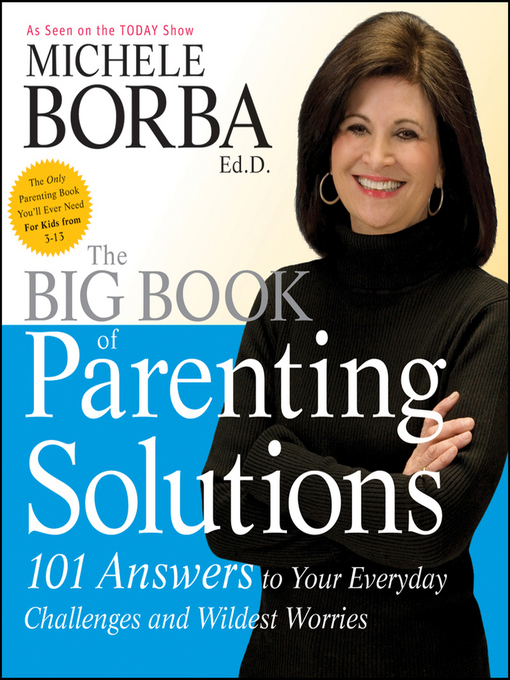Want to be a calmer parent? Here’s how to break your kid’s annoying habit—whining-once and for all!
As any parent knows, whining is one of the most irritating of kids’ habits. And although the behavior usually peaks at around 4 years of age, it can continue well into the school years. But take heart: as a mom and educational psychologist, I can tell you that whining is learned, so it can be unlearned—with the help of this four-step plan.
Step 1. Establish a zero tolerance for whining
The best way to stop the behavior is to flat-out refuse to listen to nagging requests unless it’s spoken with a polite tone. So at the first whimper of a whine firmly say: “Stop! I don’t listen to whining voices. Please tell me what you want with a nice tone.” Then walk away or turn around and ignore your kid until he talks using an acceptable voice. Stay calm. Remain respectful. Make sure your child is safe, and then ignore the behavior.
Whining is an attention-getting device, so the trick is to avoid looking irritated or reacting to it.
Be careful: a nonverbal cue such as raised eyebrow a frown, or a smirk can also signal your annoyance.
Turn back when the whining stops (even for a few seconds) and say: “I do listen to a nice voice. Can I help you now?”

This is also the time to let your child know that from now on he should expect an automatic “no” anytime he whines.
Usually whining stops when kids realize it’s getting them nowhere. Consistency is absolutely crucial when it comes to changing habits. Kids know when you’re not serious. They’ll find your weak spot. A big part of this behavior makeover is changing your behavior as well as your child’s actions.
Step 2. Demonstrate the right voice tone
Choose a time when your child is calm to talk with him about why whining is unacceptable.
A key point is to make sure he knows the difference between a whining voice and a normal speaking tone.
Demonstrate to your child what kind of voice you expect. For example: “Here’s my whining voice: ‘I don’t wanna do this.’ Here’s my polite one: ‘Can you please help me?’ When you want something, make your voice sound like my polite voice. Now you try.”
Be careful not to mimic your child. Your goal here is to be instructional, so he understands your expectations without feeling ridiculed. Just don’t assume your child knows “the right way.” Kids can often get caught up in the behavior trap of doing the negative behavior so often, they forget the right way.
Step 3. Acknowledge his “nice voice” efforts
Change is never easy especially when a child has gotten into the habit of using a whining tone. So acknowledge any efforts he makes in using a nice voice.
Remember, the best praise is always specific and always deserved.
Try responding with, “Thank you for using a nice voice. I want to hear what you have to say.”
Or “That was better! Your voice was polite that time.”
Step 4. Set a consequence if whining continues

If you have consistently tried to ignore your child’s whining for a few days and there is still no change it’s time to set a consequence so he knows you won’t tolerate it.
Make a list of what to do when your child whines at hoe or in a public setting so at the first hint of it, you’ll be ready.
For instance, if you’re driving, pull to the side of the road and wait until he talks correctly. Listen to the radio or read as you wait; he’ll get the point. In a public setting, like a mall or a movie theatre, immediately leave the scene with your child when the whining starts.
Don’t think you can wait until you’re home to correct your kid’s misbehavior. Wherever the whining occurs, is where the consequence must be administered. Calmly say on the spot: “That’s whining, and you know the rule. We’re leaving now.” (You’re right. It’s inconvenient, but believe me if you don’t down the law know so your kid knows you mean business that whining will go up at notch.)
Know too that consequences work only if they’re used every time the behavior occurs.
And just as in Step 1, you must stay unemotional: Don’t lecture, display anger, or appear irritated.
But above all: Don’t give in to those whimpering requests and your kid’s whining days will soon be over.
In fact, the top reason kids whine is to get our attention. Whether they continue to use this irritating behavior is if we give in. Then they’ve learned it works!
So don’t give in!
Dr. Michele Borba, Parenting Expert

I am an educational psychologist, parenting expert, TODAY show contributor and author of 22 books.
You can also refer to my daily blog, Dr. Borba’s Reality Checkfor ongoing parenting solutions and late-breaking news about child development.
Follow me on twitter @MicheleBorba
You can also find dozens more research-based and practical tips in my latest book, The Big Book of Parenting Solutions ( in fact there’s a whole chapter on Whining!).

